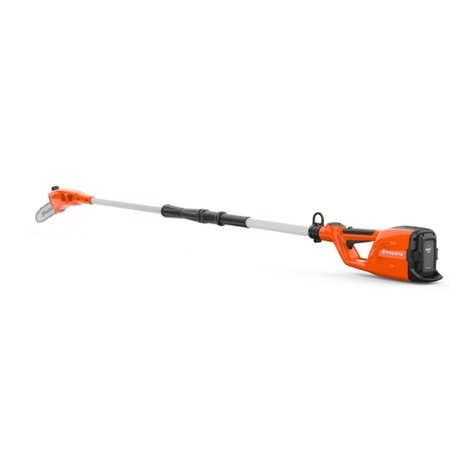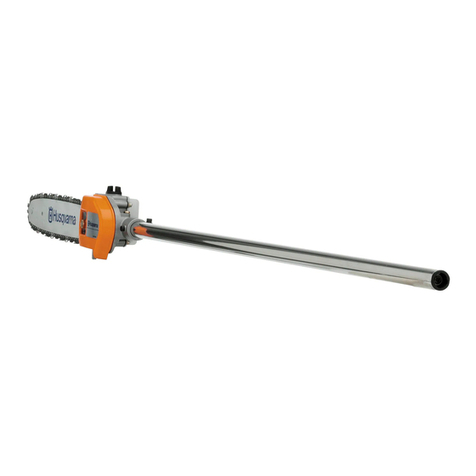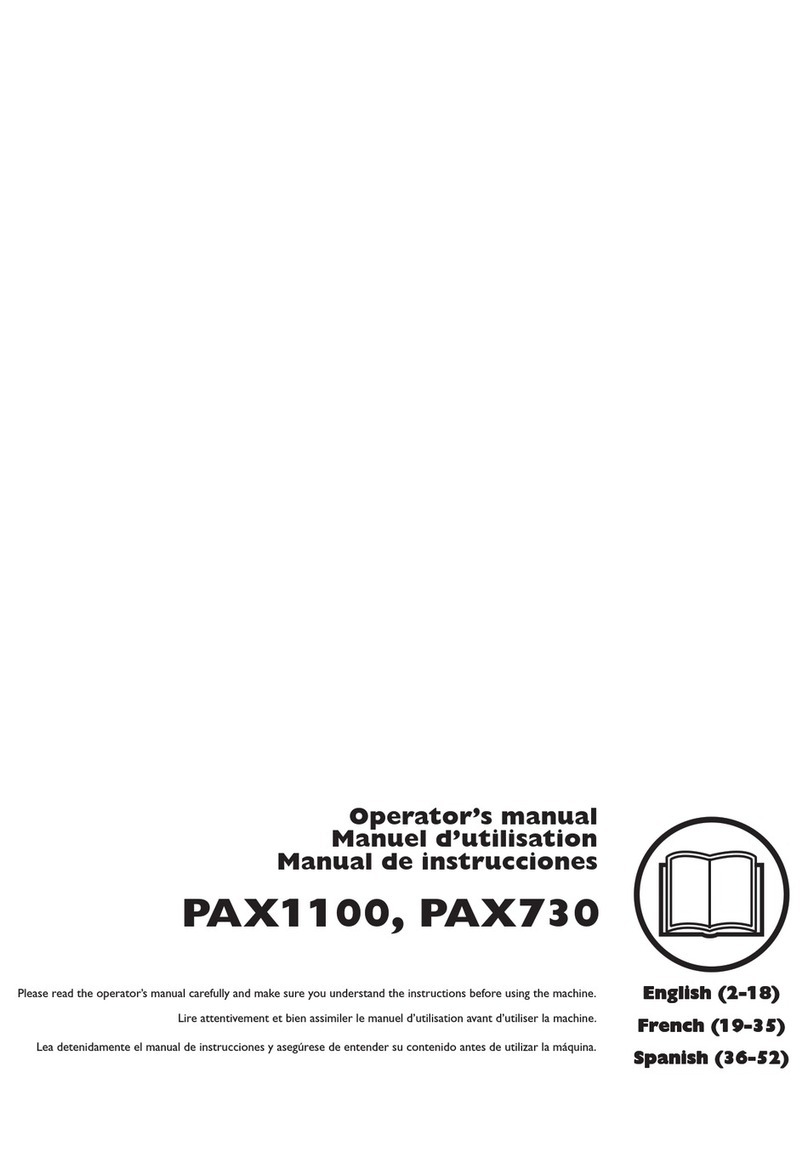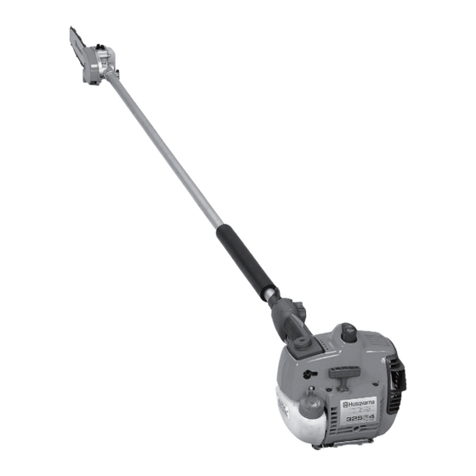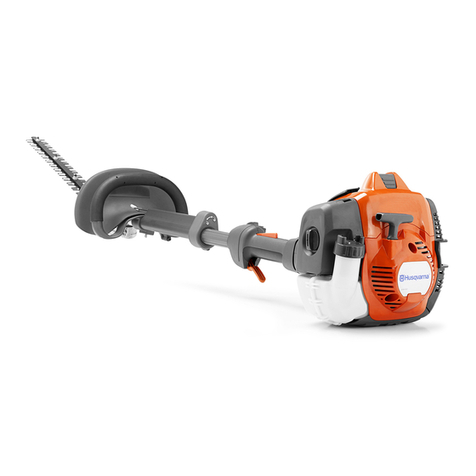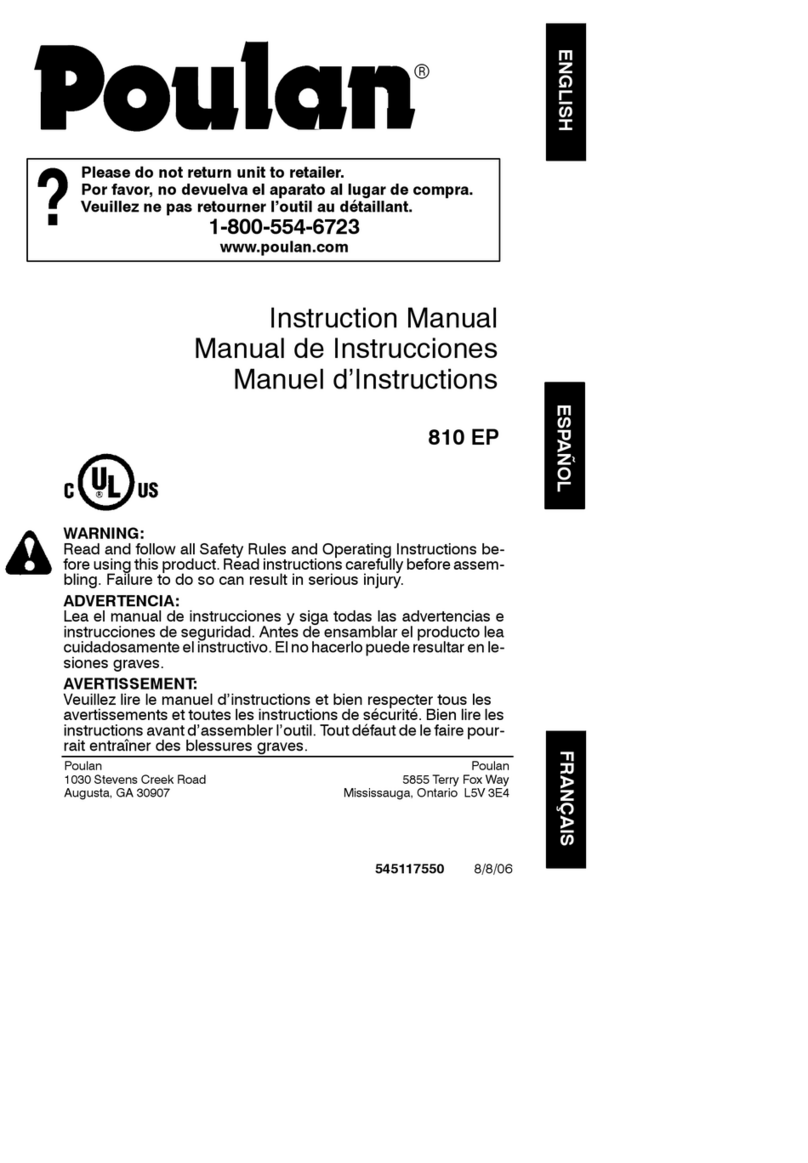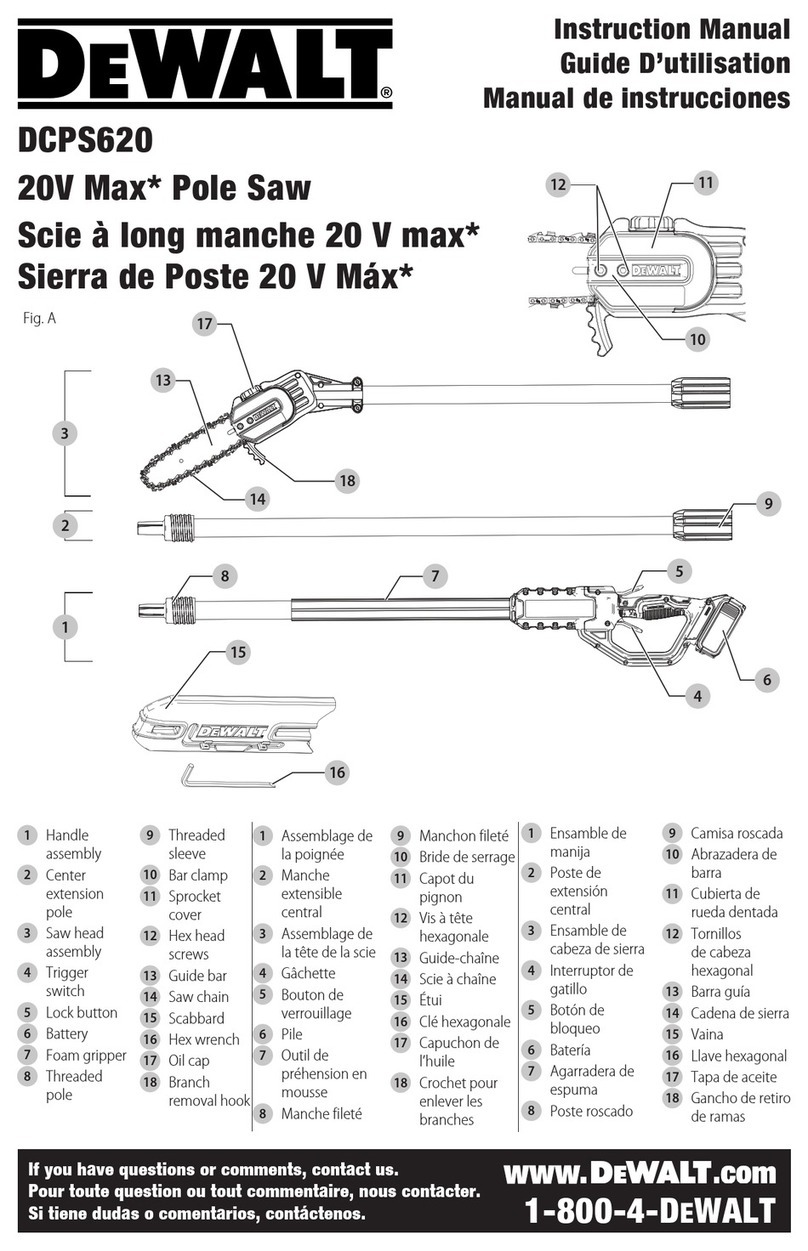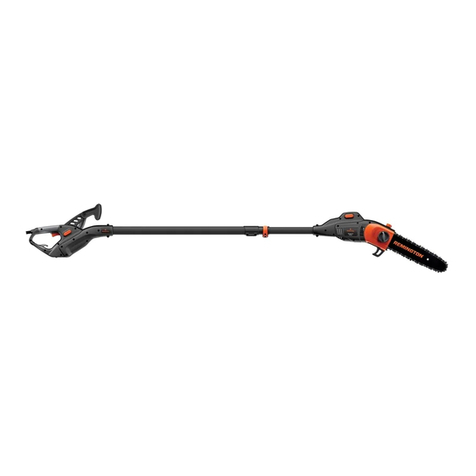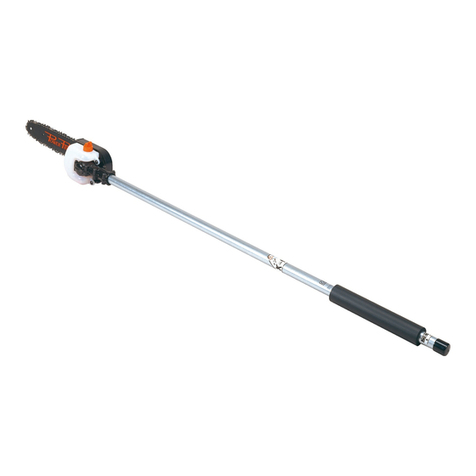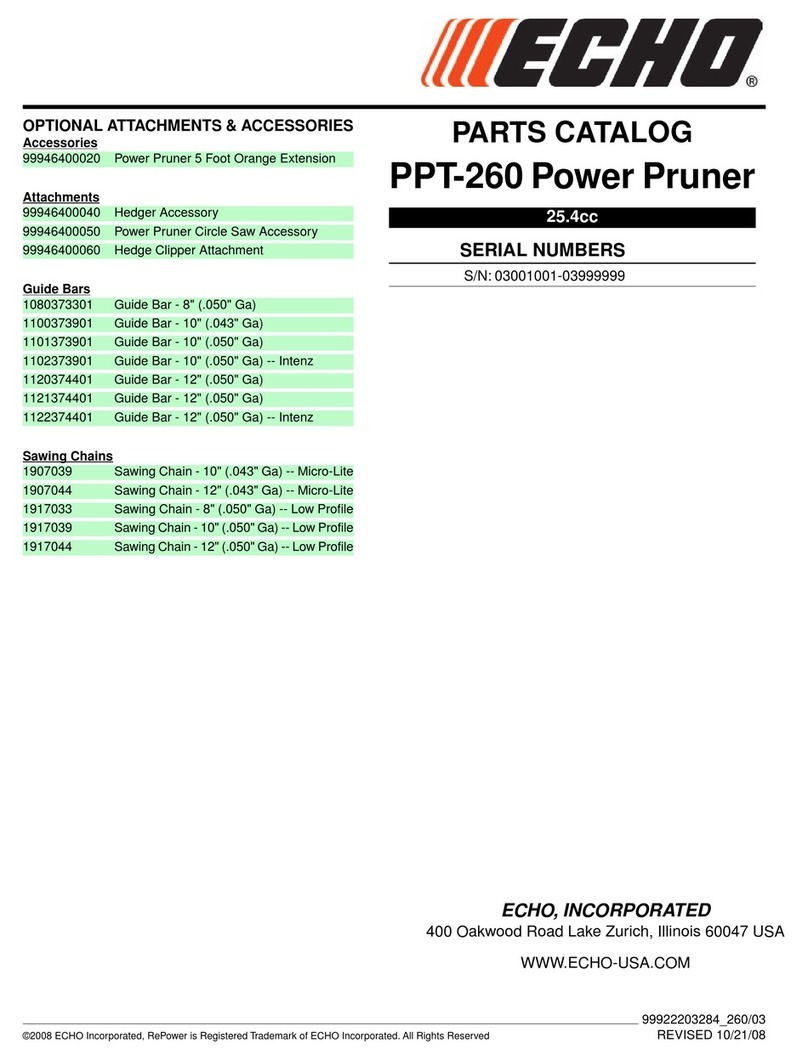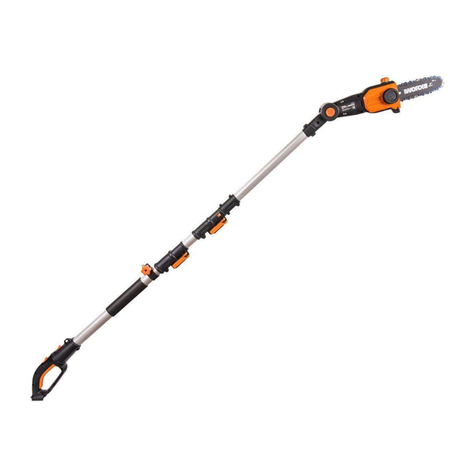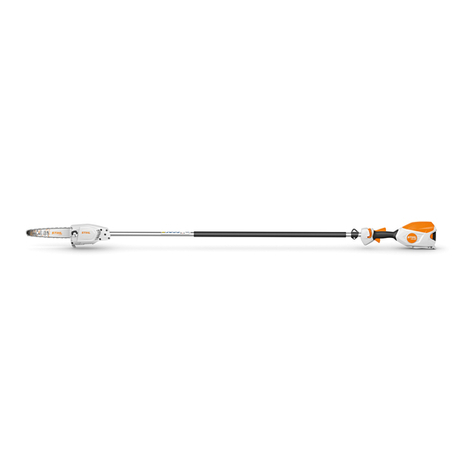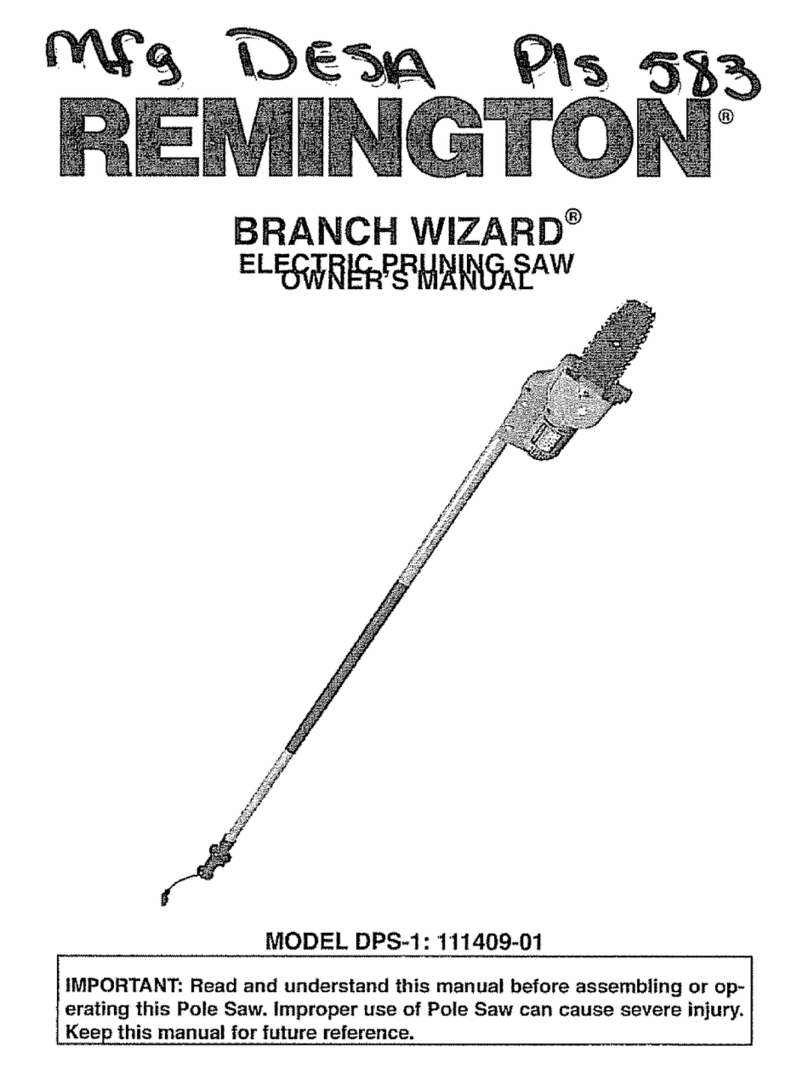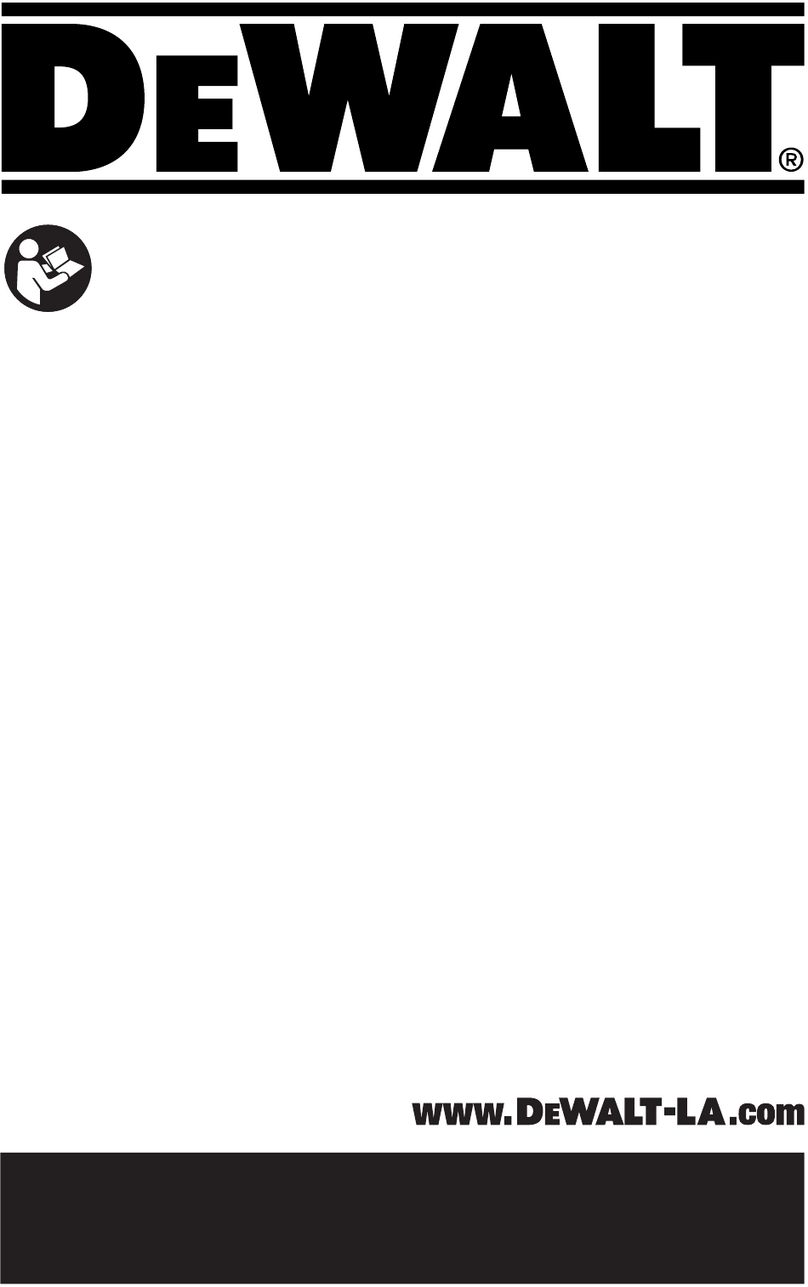English
– 5
SAFETY INSTRUCTIONS
The machine
′
s vibration damping system reduces the transfer
of vibration bet een the engine unit/cutting equipment and
the machine
′
s handle unit.
Muffler
The muffler is designed to keep noise levels to a minimum
and to direct exhaust fumes a ay from the user.
A muffler fitted ith a catalytic converter is also designed to
reduce harmful exhaust gases.
In countries that have a arm and dry climate there is a
significant risk of fire. We therefore fit certain mufflers ith a
spark arrestor mesh. Check hether the muffler on your
machine is fitted ith this kind of mesh.
For mufflers it is very important that you follo the instructions
on checking, maintaining and servicing your machine. See
instructions under the heading Checking, maintaining and
servicing the machine’s safety equipment.
Chec ing, maintaining and servicing
the machine
′
s safety equipment
Throttle loc
• Make sure the throttle control is locked at the idle setting
hen the throttle lock is released.
• Press the throttle lock and make sure it returns to its
original position hen you release it.
• Check that the throttle control and throttle lock move freely
and that the return springs ork properly.
!
WARNING! Overexposure to vibration can
lead to circulatory damage or nerve damage
in people who have impaired circulation.
Contact your doctor if you experience
symptoms of overexposure to vibration.
Such symptoms include numbness, loss of
feeling, tingling, pric ing, pain, loss of
strength, changes in s in colour or
condition. These symptoms normally appear
in the fingers, hands or wrists. The ris
increases at low temperatures.
!
WARNING! Mufflers fitted with catalytic
converters get very hot during use and
remain so for some time after stopping. This
also applies at idle speed. Contact can result
in burns to the s in. Remember the ris of
fire!
!
WARNING! The inside of muffler contain
chemicals that may be carcinogenic. Avoid
contact with these elements in the event of a
damaged muffler.
!
WARNING! Engine exhaust fumes contain
carbon monoxide, which can cause carbon
monoxide poisoning. For this reason you
should not start or run the machine indoors,
or anywhere that is poorly ventilated.
The exhaust fumes from the engine are hot
and may contain spar s which can start a
fire. Never start the machine indoors or near
combustible material!
IMPORTANT!
All servicing and repair ork on the machine requires
special training. This is especially true of the machine
′
s
safety equipment. If your machine fails any of the checks
described belo you must contact your service agent.
When you buy any of our products e guarantee the
availability of professional repairs and service. If the retailer
ho sells your machine is not a servicing dealer, ask him for
the address of your nearest service agent.




